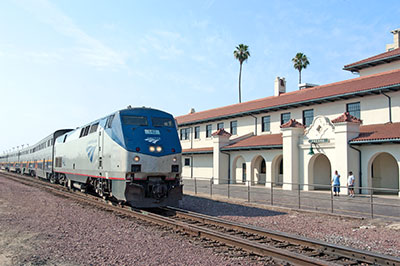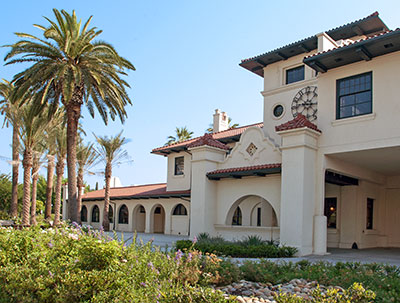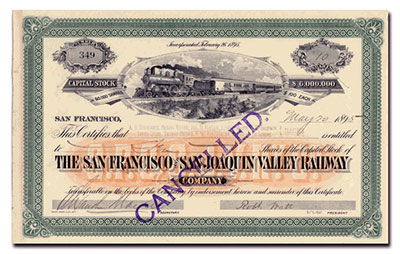National Register of Historic Places in Fresno County
Santa Fe Passenger Depot
2650 Tulare Street
Fresno
Built 1899
Fresno owes much to the railroads for its founding and growth. In 1872 the Central Pacific Railroad, later to become the Southern Pacific, selected the site for its Fresno Station a few miles south, of the San Joaquin River in the center of barren plains, but within sight of luxurious grain fields. Two years later Fresno became the county seat of Fresno County, and the little town was well on its way to becoming a strategically important community in the San Joaquin Valley in agriculture, mining and lumbering.
For several decades, Southern Pacific enjoyed a transportation monopoly. In the 1890s resentment against this monopoly took a number of forms, both socially and commercially. A series of train robberies seemed to show popular hatred of the railroad, and many persons openly sympathized with the maraudery. Other effects were attempts at water transportation up the San Joaquin River to Fresno, and some merchants used mule teams to ship goods to San Francisco.
The most important opposition to the Southern Pacific was the Valley Road, a railroad to be built down the center of the San Joaquin Valley. Construction of this People's Road began on 22 July 22 1895 in Stockton. On 6 October 1896, the first train of the San Francisco and San Joaquin Valley Railway (SF&SJV) traveled from Stockton to Fresno. The train was named Emancipator, and the Fresno Morning Republican wrote:
The "octopus"' whose tentacles have strangled commerce, industry and agriculture in this great basin, has been deprived of its power to do any further harm to these great interests.... The agriculturist will no longer suffer under the burden of exorbitant freight charges, the merchant's business will no longer languish, and capitalists will no longer avoid Fresno county because of the unfavorable prospects of deriving fair profits from their investments. Wherefore there dwelt an oppressed and despondent people there now dwells a people whose hope has been revived and who by thrift and renewed energy will make the San Joaquin Valley what it might have been years ago - one of the richest regions on the globe."
The Valley Road went on to other towns, such as Reedley, Del Rey, Oleander, Laton, Parlier, and Orosi, but the depots established in many of these towns have since been demolished. Thus the Fresno depot is of additional significance because it is still standing and is still in use.
Atchison, Topeka and Santa Fe Railroad purchased San Francisco and San Joaquin Valley Railway soon after all the tracks had been laid.
Adapted from the NRHP Nomination dated 30 August 1976.

The Fresno Depot of the Santa Fe Railroad was designed and constructed in 1899 under the direction of W. B. Storey, Jr., Engineer, who later became president of the Santa Fe Railway System.
Although the building has little architectural significance, it is typical of the many California railroad stations built in the
Mission Revival style. These stations often became the principal landmark in
communities in which the railroad stations were located.
Adapted from the NRHP Nomination dated 30 August 1976.


